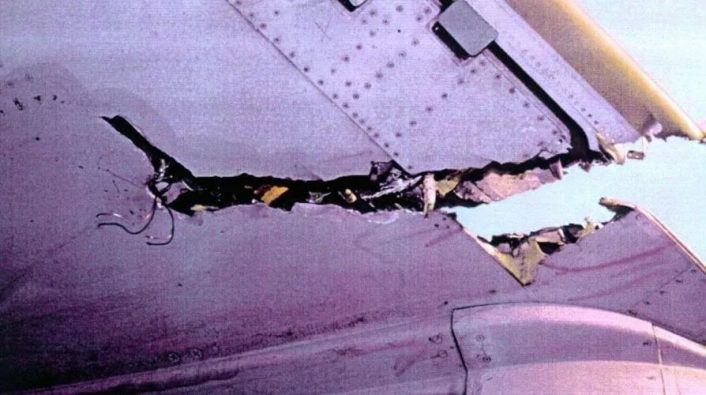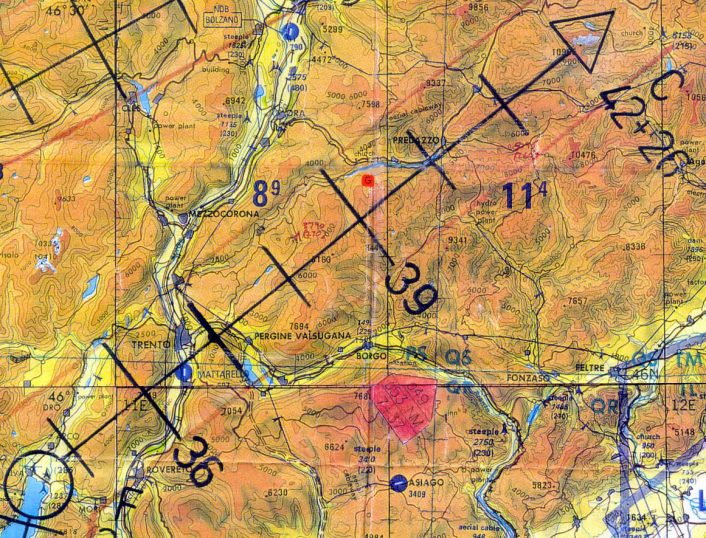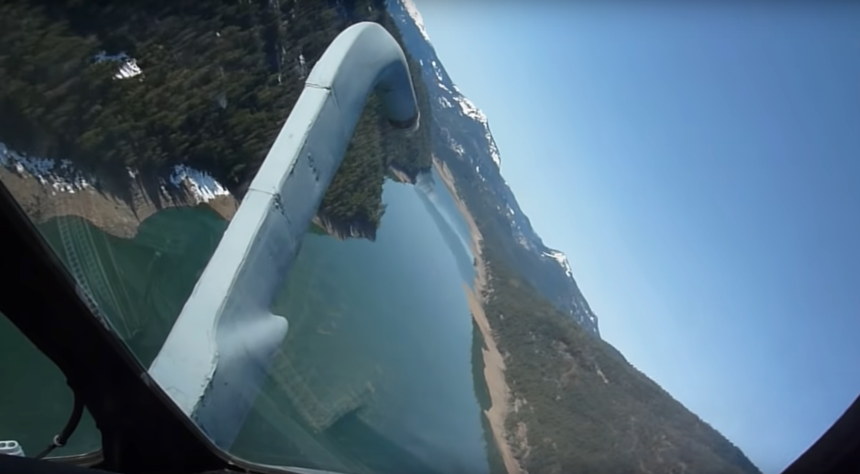This is what it looked like to fly low level in the front cockpit of an EA-6B Prowler on the first half of the VR-1355 low-level military training route in Western Washington in the Pacific Northwest.
The last U.S. Marine Corps EA-6B Prowler squadron, Marine Tactical Electronic Warfare Squadron 2 (VMAQ-2), was formally deactivated in March 2019, when the last two jets, 162230/CY-02 and 162228/CY-04, took part in Sundown Ceremony that also included flying in formation over Marine Corps Air Station Cherry Point, North Carolina.
All the U.S. Navy and Marines Prowler squadrons had already been deactivated since then (the last ones being all USMC untis: VMAQ-1, in May 2016, VMAQ-4 in June 2017 and VMAQ-3 in May 2018).
The EA-6B was an iconic aircraft born out of military requirements during the Vietnam War. It entered service in 1971 and 170 aircraft were built before the production was terminated in 1991. For more than four decades, the Prowler was “at the forefront of military electronic warfare allowing high-profile air combat missions.”
The EA-6B’s last deployment, in 2018, was carried out by VMAQ-2 to support of Operation Resolute Support and Freedom’s Sentinel, in Afghanistan, as well as Operation Inherent Resolve, in Iraq and Syria. But, overall, the Prowler deployed more than 70 times to support every major combat operation, including those in Libya, Iraq, Afghanistan, Syria and Serbia.
While not deployed, the type carried out stateside training sorties, practicing ground-attack support missions, disruption of enemy electromagnetic activity and tactical electronic intelligence. While most of the latest mission profiles saw the aircraft operate at medium and high altitude, the Prowler’s aircrews regularly flew low level training missions too.
The footage in this post was taken in 2010 by a user who, based on the other videos posted on his Youtube channel, flew with the U.S. Navy’s VAQ-139 “Cougars”. The clip is particularly interesting as it shows, from the front cockpit, an EA-6B flying low level along VR-1355, one of the low level routes running through national parks in the Cascade Mountains.
As we explained in a post about a photo of an EA-18G taken there, the Visual Route 1355 is colloquially called the “million dollar ride” for both the scenic views and the fun and “aggressive” flying that can be done through the valleys. Thanks to the video below, now you can also get an idea of what it looked like to fly the route at low level in the Prowler.
While the footage is outstanding, I’m pretty sure it will also remind someone the famous incident that occurred to an EA-6B in Italy in 1998.
On Feb. 3, 1998, EA-6B Prowler #163045/CY-02, from VMAQ-2, deployed at Aviano AB, in northeastern Italy, for the Balkans crisis, using radio callsign “EASY 01” and flying a low level route cut a cable supporting a cable car of an aerial lift, near Cavalese, a ski resort in the Dolomites. Twenty people died when the cabin plunged over 260 feet and crashed on the ground in what is also known as the “Cavalese cable car disaster” or “Strage del Cermis“.
At 15:13 LT, when the aircraft struck the cables supporting the cable car the aircraft was flying at a speed of 540 miles per hour (870 km/h) and at an altitude of between 260 and 330 feet (80 and 100 m) in a narrow valley between the mountains.
While the aircraft had wing and tail damage, it was able to return to Aviano.

The subsequent investigation found that the EA-6B was flying too low and against regulations. Initially, all four men on the plane were charged, but only the pilot, Captain Richard J. Ashby, and his navigator, Captain Joseph Schweitzer, actually faced trial (that took place at Marine Corps Base Camp Lejeune, North Carolina), charged with twenty counts of involuntary manslaughter and negligent homicide. At the end of the first trial, the pilot was acquitted on all charges relating to the disaster (charges which were dropped for the navigator too) in a verdict that caused shock and resentment in Italy generating an upsurge of anti-American feeling.
During the trial it emerged that the U.S. Marine Corps aircrews used obsolete U.S. military maps that, unlike local ones, did not show the cables, and were not aware of altitude regulations concerning low level flying.
The two Marines were court-martialed a second time when it became evident they had destroyed a videotape filmed on the day of the incident. Eventually, Capt. Ashby and Schweitzer were found guilty in May 1999; both were dismissed from the service and Ashby received a six-month prison term. Families were eventually compensated 1.9M USD per victim.










